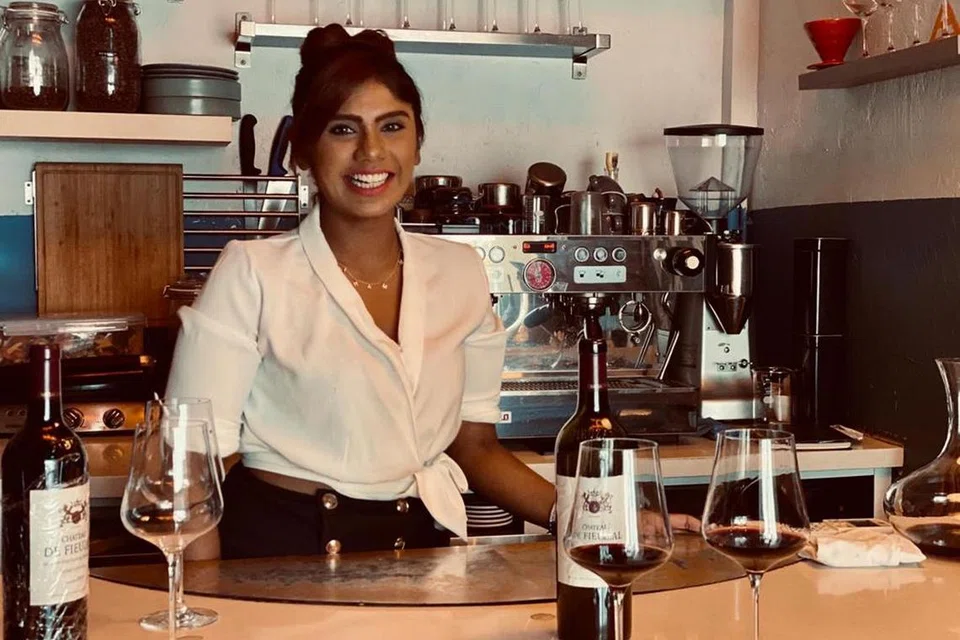Sommelier K. Shamini has been asked the question enough times that she has perfected her answer.
“A wine Sherpa that guides you along your journey towards discovering wine,” she says when I ask her what a sommelier means and does.
The 36-year-old Singaporean, who works as the head sommelier at Wine To Share, a South African winemaker and distributor, is one of a handful of female sommeliers in Singapore. More significantly, she is one of the rare few of Indian descent.
Emphasising that a person’s “wine and dine” experience is ultimately “all about the food”, Shamini says there is often a lot of communication between the kitchen and the sommelier about what type of wine pairs well with the cuisine on offer.
Her food and beverage career began as a hostess at Wolfgang Puck’s CUT restaurant at Marina Bay Sands, where she found herself intrigued by how her colleagues knew so much about wine and would know just which type to pair with a certain dish.
“My colleague had information about each wine at her fingertips. Whenever she talked about her work, my interest in it doubled each day,” Shamini says. “Everytime she went to the table she would sell, and it left an impression on me.”
But it wasn’t until she worked at Esquina in Chinatown that she fell in love with wine. “There I learnt about Albarino (a variety of grape for white wine), which is one of my favourite grapes. It’s so underrated. Later, I gained an appreciation for Rioja wines and grenache.”
Sold on the mysteries and intricacies of wine, Shamini obtained her sommelier certification after completing four levels at Wine & Spirit Education Trust, a global organisation that arranges courses and exams in the fields of wine, spirits, beer and sake.
“I completed four levels – you only need three to become a certified sommelier – and I learnt basically what wine is, how grapes work, the different types of wine and the vinification process,” she explains.
“I just liked learning about it, and then having the answers to diners when they ask me about different types of wine.”
Her educational journey also took her to London and France, where she saw first-hand the lives of farmers working in the vineyard and observed how wine is made from scratch.
Later on, Shamini had sommelier stints at several fine dining establishments in Singapore, including Les Amis, which is renowned for having the largest wine collection in South-east Asia.
She also had spells at Indian restaurants Revolver and Amakase.
Wine and Indian food? Surely they don’t go well together, I ask.
“Many people are apprehensive about the combination. But it’s just about playing with the spices,” Shamini says confidently.
“Indian, Thai and Chinese – these cuisines are similar in terms of spice levels. So white varietals like Viognier work well. For the reds, the heavier stuff works best, like a young Bordeaux – because they have the acidity that cuts through the fat and the oil.”
“If you’re having a biryani, do a Syrah or a Shiraz,” she adds. “A zinfandel as well. All these have weight, so they work well with Indian food.”
For those who want to develop a predilection for wine, but are often put off by various reasons – cost, not knowing which wine to choose – Shamini says simply: “Just start drinking.”
“And every time you drink a glass of wine, pick out one characteristic that you like or are familiar with.
“You don’t have to be overwhelmed by someone who says ‘this wine tastes of nutmeg or the water at Niagara Falls’, because that’s someone else’s taste buds and palette. There are a lot of things you yourself can identify with. There’s no right or wrong.
“The more you taste, the more you understand. And you’ll find your palate is actually much smarter than what you think.”


